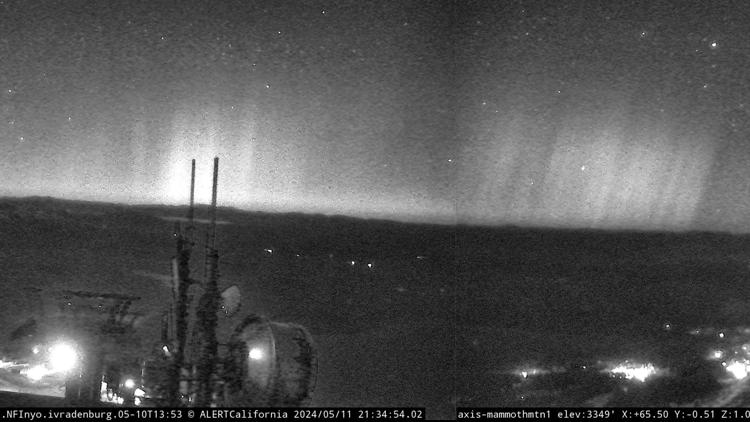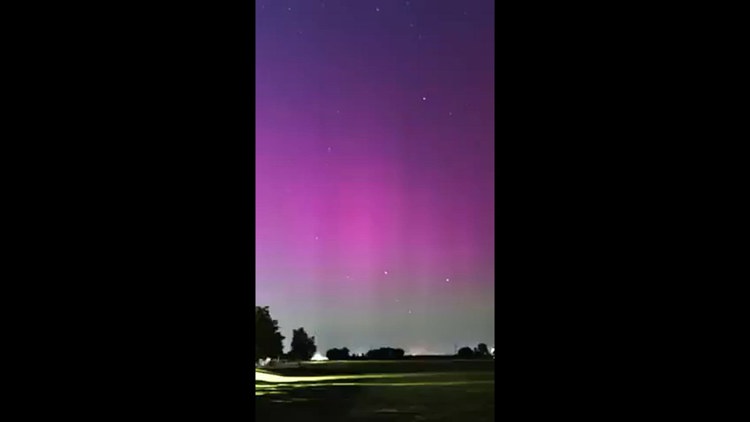PLACERVILLE, Calif. — Hundreds of people gathered at the Community Observatory in Placerville Saturday night for another chance to see the Northern Lights.
The phenomenon, known officially as the aurora borealis, is caused by solar flares creating extreme geomagnetic storm conditions thus creating pretty lights in the sky.
The conditions were right for another viewing given the waxing crescent moon not illuminating too much of the sky.
Randy Hodges, chief docent at the Placerville Community Observatory, says tonight's show may be a rerun of what they witnessed Friday. So what can people expect?
"There were whooping and hollering, it was amazing," he said. "Everybody was out here and no one was looking through our telescopes, they were — everybody was just looking at this naked eye object. You don’t need any special equipment to see it, but to really see the color you’d have to look at it through a camera and everyone was just using their cell phones for that and that worked great."
The "naked eye object" could be seen across the world, spanning from London to the Bay Area and well beyond.
Northern Californians mesmerized by rare appearance of northern lights
"I am so excited to be able to see it tonight. It really is once-in-a-lifetime here at this latitude particularly because we are so much further south than where typically aurora borealis would be seen," said Kaitlyn Falconer, lead docent at the observatory. "It’s really exciting."
The last time we saw geomagnetic storm conditions of this magnitude was back in 2003, Hodges calling it a "pretty rare phenomenon."
For those wanting to take a peek, conditions should be best after 10 p.m. and into early Sunday morning depending on where you are. Some places father south or lower in elevation may need to snap a few photos of the sky (facing North) with a long exposure lens or "night mode" camera to see anything.
Those wanting ideal conditions can go up to the Community Observatory in Placerville where a public watch party will be held until 11 p.m. for free. The public is allowed to use the space as long as they'd like to view the Northern Lights.
“We would love to see people come on up and enjoy the sky. We can’t promise this good of a show every week but we have planets and galaxies and nebulas and all kinds of neat stuff to look at,” said Hodges. “We’re always free and always open to the public.”
The observatory is open Friday and Saturday nights from 9 p.m. to 11 p.m.





































